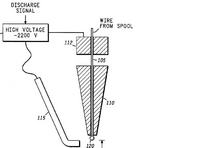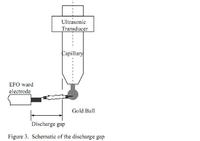jpsmith123
Full Member level 2
ansoft vs. cst
Just in case anyone else is interested...
Well I decided to make a spark gap switch using some round graphite rod material for electrodes, and I wanted to see what the E-field would look like, i.e., what kind of field enhancement would result if I merely rounded the edges to a 0.125" radius (using a form tool in a lathe), so I simulated it using CST EMS 2009, and for comparison, Ansoft Maxwell 2D v12.1.
As expected, the CST scalar field plot is an unintelligible mess (using the default settings) whereas the default Ansoft field plot seems reasonable and informative.
Granted that the CST field plot can be improved somewhat by making the mesh finer and adjusting the "plot properties", particularly the "scaling", but even at its best, the CST plot seems highly artifactual and less useful than the Ansoft result.
I wonder, is CST EMS really this useless for such a simple electrostatic problem, or am I doing something wrong?
I will attempt to attach images of the several field plots to this post. The first is the Ansoft Maxwell plot, followed by CST EMS, first using tetrahedral mesh and then hexahedral mesh.



Just in case anyone else is interested...
Well I decided to make a spark gap switch using some round graphite rod material for electrodes, and I wanted to see what the E-field would look like, i.e., what kind of field enhancement would result if I merely rounded the edges to a 0.125" radius (using a form tool in a lathe), so I simulated it using CST EMS 2009, and for comparison, Ansoft Maxwell 2D v12.1.
As expected, the CST scalar field plot is an unintelligible mess (using the default settings) whereas the default Ansoft field plot seems reasonable and informative.
Granted that the CST field plot can be improved somewhat by making the mesh finer and adjusting the "plot properties", particularly the "scaling", but even at its best, the CST plot seems highly artifactual and less useful than the Ansoft result.
I wonder, is CST EMS really this useless for such a simple electrostatic problem, or am I doing something wrong?
I will attempt to attach images of the several field plots to this post. The first is the Ansoft Maxwell plot, followed by CST EMS, first using tetrahedral mesh and then hexahedral mesh.




